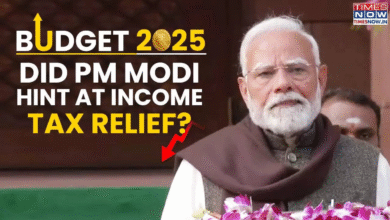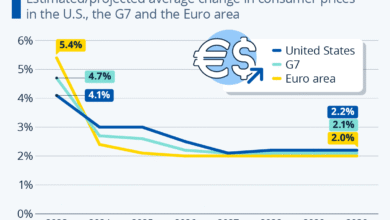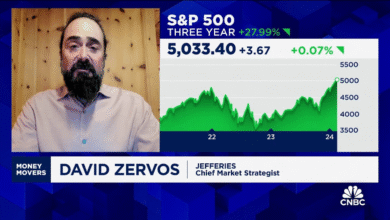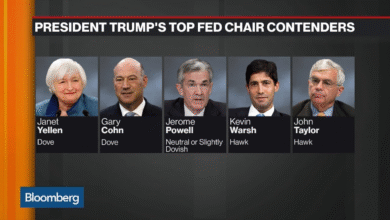Trump Tariff Announcement: Additional 10% for BRICS Nations
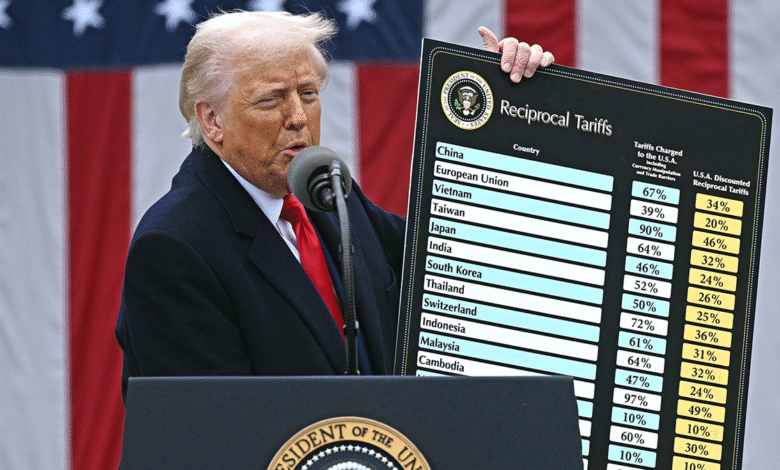
In a bold move that has garnered attention worldwide, the Trump tariff announcement revealed that an additional 10% tariff will be imposed on nations perceived to be aligning with the anti-American policies of BRICS countries. This policy, stated by President Donald Trump via Truth Social, aims to address growing concerns about global economic stability and trade imbalances. Trump emphasized, “Any country aligning themselves with the anti-American policies of BRICS will incur an ADDITIONAL 10% tariff. There will be no exceptions to this policy,” indicating a firm stance on international relations. As the BRICS bloc convened in Rio de Janeiro, this news has set the stage for potential shifts in global trade dynamics. The implications of such tariffs extend beyond immediate financial impacts, sparking discussions about the future of U.S. trade relations and the responses from the affected nations, making this a crucial development in ongoing Trump news.
In recent developments, the U.S. administration has announced plans for new import tariffs targeting nations perceived as supporting the adverse policies associated with the BRICS coalition. This latest tariff announcement introduces a significant increase, with a specified 10% surcharge looming over these countries. Such financial measures reflect an ongoing strategy to confront what some consider unfair economic practices in global commerce. As these emerging markets unite in Rio de Janeiro, the ramifications of this tariff could reshape trade relationships and provoke international responses. Stay tuned for updated news as negotiations and strategies evolve around these pressing trade issues.
The Implications of Trump’s 10% Tariff Announcement
In a bold move, President Donald Trump’s announcement of a 10% tariff on countries engaging in what he terms as ‘anti-American policies of BRICS’ sends ripples across the global trading community. This tariff directly impacts a list of countries that align themselves with the BRICS bloc, which includes economic powerhouses like China and India. By categorizing these nations under anti-American policies, Trump aims to bolster U.S. economic interests while posing a challenge to the political alliances formed by these emerging market nations.
The potential implications of this tariff are multifaceted. Economically, countries hit by this tax may respond by adjusting their trade policies or seeking alternative markets, leading to shifts in global trade dynamics. The swift enforcement of tariffs could also ignite tensions between the U.S. and BRICS member countries, which might retaliate with tariffs of their own, potentially resulting in a trade war. For American consumers, this could mean higher prices on imported goods, while businesses that rely on overseas materials may feel the financial pinch.
Trump’s Position on Global Trade Amidst BRICS Summit
During the recent BRICS summit in Rio de Janeiro, as leaders from major developing nations gathered to discuss collaborative challenges, Trump’s decision to impose additional tariffs highlights the growing rift between the U.S. and the BRICS countries. This meeting of influential economies has drawn attention and responses from global powers, with both economic and political ramifications. Trump’s policy shifts reflect an aggressive stance on global trade that prioritizes American interests, even if it means isolating the U.S. from emerging markets.
The meeting in Brazil becomes a backdrop for Trump’s tariff announcement, suggesting a deliberate strategy to undermine the unity of the BRICS coalition. The President’s positioning is not just about trade; it also addresses geopolitical strategies as countries within the bloc are seen as potential rivals to U.S. influence. The long-term effect of these tariffs may alter the landscape of international relations, pushing BRICS nations to strengthen their partnerships while seeking to lessen dependency on American markets.
Reactions to Trump’s Tariff Policy in the BRICS Community
Trump’s announcement of an additional 10% tariff has triggered a slew of responses from BRICS nations, many of which are critical of U.S. policies. Leaders from Brazil, Russia, India, China, and South Africa, among others, expressed their concern that such measures could escalate trade tensions and destabilize existing economic arrangements. This sentiment underscores the collective disdain within the BRICS group toward what they perceive as unilateral and retaliatory economic tactics from the United States.
Moreover, the BRICS coalition, which prides itself on fostering cooperation among developing nations, may galvanize its members to present a united front against tariff measures. This could lead to the institution of protective measures among BRICS nations, potentially reducing their reliance on American goods and encouraging intra-BRICS trade. In this evolving scenario, the stance taken by Trump may inadvertently strengthen rather than weaken economic solidarity within the bloc.
The Role of Anti-American Policies in Trump’s Economic Strategy
At the core of Trump’s economic strategy is the framing of anti-American policies, particularly those observed in BRICS nations. By targeting countries that align with these policies, he seeks to clarify his administration’s commitment to protecting American interests, thereby appealing to a domestic audience that resonates with nationalist trade sentiments. This approach not only positions the U.S. to fend off perceived threats but also encourages a narrative of American exceptionalism in global commerce.
Trump’s rhetoric suggests that he views economic alignment as a zero-sum game, where any gains by BRICS countries are seen as losses for the United States. This outsider perspective emphasizes a worldview where America must reclaim its dominance by employing tariffs as a tool against adversarial alliances. In this context, anti-American policies become a rallying cry for his administration to justify aggressive economic measures and influence public opinion.
Economic Consequences of Trump’s Tariff on American Consumers
The immediate economic consequence of Trump’s 10% tariff policy is likely to be felt by American consumers, especially in industries heavily reliant on imports from BRICS nations. As manufacturers and retailers face increased costs due to the tariffs, many may pass these costs onto consumers. This could lead to higher prices on a range of consumer goods, from electronics to apparel, thereby impacting the purchasing power of everyday Americans.
Furthermore, the ripple effect of these tariffs may extend beyond immediate price hikes; it could disrupt supply chains that are already complicated in a globalized economy. Businesses that depend on materials and products from BRICS countries might have to adjust their sourcing strategies, leading not only to potential job losses in vulnerable sectors but also to stunted growth in industries positioned for expansion. The long-term economic impact could be significant, fundamentally altering consumer habits and reshaping the landscape of American retail.
Geopolitical Ramifications of Tariffs Against BRICS
The geopolitical landscape is shifting as Trump’s administration embarks on an aggressive tariff strategy targeting nations within the BRICS bloc. These tariffs may not only curtail trade relations but could also ignite broader geopolitical tensions, as countries like China and Russia may react defensively. Such actions could drive these nations closer together, fostering deeper economic and political ties between them to counteract U.S. influence.
Furthermore, Trump’s tough stance may compel BRICS countries to explore alternative partnerships among themselves or with other nations outside the U.S. orbit, potentially reconfiguring alliances that have persisted in international trade. Strategic cooperation among BRICS nations could emerge as a counterbalance to U.S. dominance, leading to a new paradigm in international relations and impacting global governance structures.
Tariff Policy: A Tool for Reasserting U.S. Influence
Trump’s use of tariffs as a foreign policy tool reflects a calculated strategy to reassert U.S. influence in global trade. By imposing barriers on countries aligned with the anti-American policies of BRICS, Trump signals to both domestic and international audiences that the U.S. intends to remain a formidable force on the world stage. This tactic aligns with a broader agenda to prioritize American economic interests while pushing back against the perceived rising influence of non-Western powers.
The increased tariffs on BRICS nations can be interpreted as a method to foster protectionism, aimed at benefitting domestic industries. However, this approach may lead to short-term gains overshadowed by long-term diplomatic setbacks. Allies may begin to question America’s reliability as a partner, while adversaries could unite against the perceived hegemony of U.S. trade policies. As the global economic environment shifts, the tariffs could reshape America’s role and standing in the international community.
The Future of U.S.-BRICS Relations Post-Tariff Announcement
In the wake of Trump’s recent 10% tariff announcement, the future of U.S.-BRICS relations appears increasingly precarious. This tariff strategy signals a significant departure from decades of engagement strategies that sought to foster collaboration and mutual benefit. As BRICS nations reassess their economic policies and partnerships in response to Trump’s actions, a new era of skepticism and tension may define interactions between these global economic powers.
Potential retaliatory measures from BRICS countries could lead to a tit-for-tat escalation of tariffs and sanctions, which would complicate any future negotiations. This evolving dynamic raises questions about the viability of current trade agreements and cooperative initiatives. Going forward, the trajectory of U.S.-BRICS relations will depend largely on diplomatic efforts to manage conflicts stemming from these tariffs, as well as the underlying economic interests that bind these countries.
Frequently Asked Questions
What did Trump state about the 10% tariff on countries aligned with BRICS?
In his announcement, President Trump stated that an additional 10% tariff will be imposed on countries that align themselves with the anti-American policies of BRICS. This policy applies universally with no exceptions, significantly impacting global trade.
Which countries are considered part of the BRICS group that may be affected by the Trump tariff announcement?
The BRICS group includes Brazil, Russia, India, China, South Africa, as well as Saudi Arabia, Egypt, the UAE, Ethiopia, Indonesia, and Iran. Any of these countries aligning with anti-American policies may incur the additional 10% tariff as per Trump’s announcement.
How does the Trump tariff announcement affect global trade relations?
The Trump tariff announcement introduces an additional 10% tariff on countries aligning with BRICS anti-American policies, potentially disrupting global trade relations and increasing tensions between the U.S. and affected countries.
What are Trump’s reasons for the new 10% tariff targeting BRICS allies?
Trump’s reasons, as stated, focus on countries aligning with anti-American policies of BRICS. The tariffs appear aimed at discouraging diplomatic and economic ties with the bloc, thereby impacting international trade dynamics.
When did Trump announce the new tariffs and what other event coincided with this announcement?
Trump announced the new 10% tariffs on the eve of the BRICS summit taking place in Rio de Janeiro, Brazil, highlighting the timing as indicative of U.S. policy towards nations grouped under the BRICS banner.
What does Trump’s announcement imply for U.S. trade policy moving forward?
Trump’s announcement underscores a more aggressive U.S. trade policy, signaling readiness to penalize countries supporting BRICS anti-American policies, thus reshaping the landscape of international trade amid rising tensions.
How can countries respond to the new 10% tariff imposed by the Trump administration?
Countries impacted by the new 10% tariff can negotiate trade agreements with the U.S. or seek to align themselves more closely with U.S. interests to mitigate the effects of these tariffs on their economies.
| Key Point | Details |
|---|---|
| Trump Tariff Announcement | An additional 10% tariff will be imposed on countries aligning with anti-American policies of BRICS. |
| BRICS Summit | The announcement coincided with the BRICS summit in Rio de Janeiro. |
| No Exceptions Policy | Trump emphasized there will be no exceptions to this tariff policy. |
| Countries Involved | BRICS includes Brazil, Russia, India, China, South Africa, Saudi Arabia, Egypt, UAE, Ethiopia, Indonesia, and Iran. |
| U.S. Actions | The U.S. will send letters detailing country-specific tariff rates and agreements starting Monday. |
Summary
The Trump tariff announcement signals a significant shift in U.S. trade policy, aimed at countries that are perceived to align with the anti-American stance of BRICS. By imposing an additional 10% tariff without exceptions, Trump underscores a firm stance on international trade relations. This decision arrives amidst a global gathering of BRICS nations, which seek to enhance their political and diplomatic coordination. As the U.S. moves forward, detailed letters on specific tariff rates will provide clear guidance to trading partners affected by this new policy.

